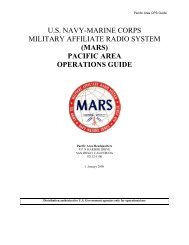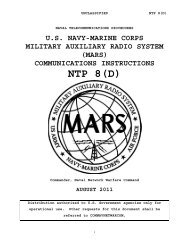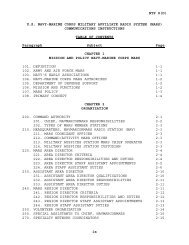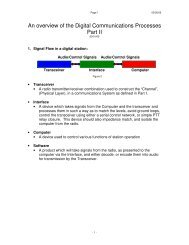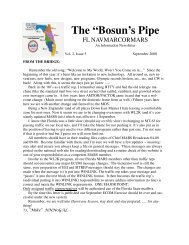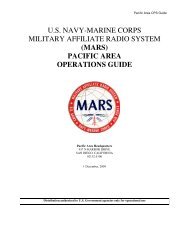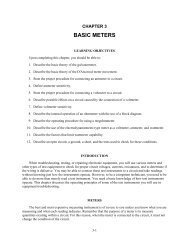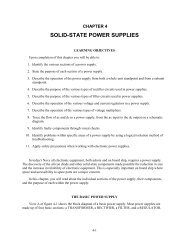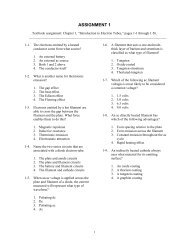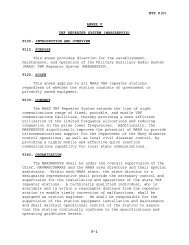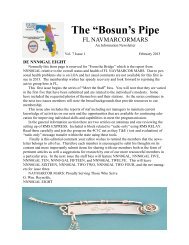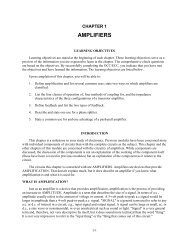You also want an ePaper? Increase the reach of your titles
YUMPU automatically turns print PDFs into web optimized ePapers that Google loves.
The circuits that we have discussed up to this point were chosen to show the general conceptsdiscovered by Edison and Fleming. They are not practical because they do no useful work. For now, onlythe concepts are important. Practical circuitry will be presented later in this chapter as you learn specificpoints about the construction, limitations, and other characteristics of modern diode tubes.Q5. An ac voltage is applied across a diode. The tube will conduct when what alternation of ac isapplied to the plate?Q6. What would be the output of the circuit described in question 5?DIODE CONSTRUCTIONDiode tubes in present use are descendants of Fleming's valve. There is a family resemblance, butmany changes have been made from the original. Diodes are both smaller and larger, less powerful andmore powerful, and above all, more efficient and more reliable. The search for greater efficiency andreliability has resulted in many physical changes, a few of which will be covered in the next paragraphs.Most of what is said here about construction and materials will be true of all electron tubes, not justdiodes.FilamentsModern filaments in ALL tubes last longer, emit greater amounts of electrons for a given size, andmany operate at a lower temperature than in the early days. Most improvements have resulted from theuse of new materials and from better quality control during manufacture.Three materials that are commonly used as filaments are tungsten, thoriated tungsten, andoxide-coated metals.Tungsten has great durability but requires large amounts of power for efficient thermionic emission.Thoriated-tungsten filaments are made of tungsten with a very thin coat of thorium, which makes a muchbetter emitter of electrons than just tungsten. Oxide-coated filaments are made of metal, such as nickel,coated with a mixture of barium and strontium oxides. The oxide coat, in turn, is coated with a onemolecule-thicklayer of metal barium and strontium. Oxide coating produces great emission efficiencyand long life at relatively low heat.A major advance in electronics was the elimination of batteries as power sources for tubes. Except inelectronic devices designed to be operated away from the ac power source, alternating current is used toheat filaments.Voltage may be supplied by a separate filament transformer or it may be taken from a filamentwinding that is part of a power transformer. The actual voltage may vary from 1 volt up and depends onthe design of the tube. Common filament voltages are 5.0, 6.3, and 12.6 volts ac. Filaments may beconnected in series with other tube filaments or may be in parallel with each other. This is determined bythe equipment designer.CathodesAs was mentioned previously, a more formal name for the electron-emitting element in a tube is theCATHODE.Cathodes in all tubes, not just diodes, are of two general types, either directly heated or indirectlyheated. Each has its advantages and disadvantages.1-8



